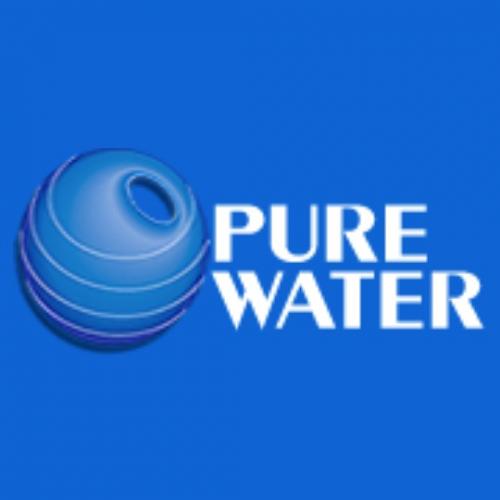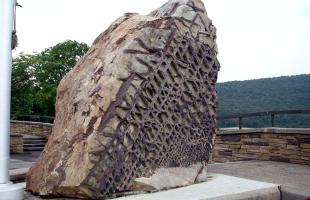The Pure Water Newsletter #3, 1999 Issue

The Pure Water Newsletter
#3, 1999 Issue
"Improving the Quality of Life trough the Quality of Water."
News and Views about Water and Health from http://www.purewaterinc.com/
>> Note: This newsletter is sent only to subscribers who requested it. This publication may be freely redistributed if copied in its ENTIRETY <<
IN THIS ISSUE
- Welcome!
- Water in the News
- Featured Article: Hazardous Underground Injection Wells Stirs Controversy in Industry By Donald Sutherland Member of the Society of Environmental Journalists
- Distilled Water Tip
- Previous Newsletter
Welcome!
Welcome to the third edition of The Pure Water Newsletter brought to you by Pure Water, Inc! Every month or so we will bring you up to date on Drinking Water and Health issues surrounding your drinking water.
Our online family keeps growing and we thank everybody for letting their friends and family now about our newsletter and web site.
Please visit us at the Pure Water, Inc web site for new contests, news headlines, product info, business opportunities etc. http://www.purewaterinc.com/
Business Opportunity
Pure Water Brandoffers a number of business opportunities to anyone wanting to get into the drinking water business. Whether you want to start a bottled water plant, a water store, or get people involved with the best drinking water systems for the home or office, Pure Water,Inc. can give you that opportunity.
http://www.purewaterinc.com/html/business_opportunities.htm
Water in the News!
(AOL Users: You may have to cut/paste the URL's below into your browser in order to view the online articles)
Worst E.coli outbreak in New York history sickens nearly 300--CNN New York
(AP) -- The largest E. coli outbreak in state history -- and possibly one of the worst nationally -- has sickened nearly 300 people who believe they were infected after attending a county fair. Health officials were still investigating the outbreak's cause, but suspected the fair's water supply may have been contaminated when rainwater runoff washed cow feces from a nearby farm into an underground aquifer.
http://cnn.com/FOOD/news/9909/09/ecoli.new.york.ap/index.html
Tip: A Drink for Health--The American Dietetic Association
When you hear the words -- grab a drink for health -- what beverage comes to mind? This time the answer is not wine, it's water. Water is essential to health, a fact we sometimes forget. Getting enough water means keeping your body properly hydrated and staying hydrated means staying healthy.
http://www.eatright.org/erm/erm050699.html
The quality of American rivers has worsened--USNews
A U.S. News examination of Environmental Protection Agency data and state reports on thousands of rivers from 1984 to 1998 finds that the percentage of rivers designated as "impaired" has grown from 26 percent in 1986 to 36 percent in the most recent reports. Rivers are classified as impaired when they can't support aquatic life or are unsafe for fishing or swimming.
http://www.usnews.com/usnews/issue/980928/28rive.htm
IVs Aren't the Best Way to Rehydrate Athletes--ABC News
When champagne sprayed through the locker room after the Dallas Cowboys clinched a spot in the 1993 Super Bowl, Emmitt Smith was nowhere to be found. The star running back was so dehydrated that he could barely stand, let alone celebrate.
http://more.abcnews.go.com/sections/living/DailyNews/ivs980528.html
Harvard Magazine - The Micro-Menace of Biofilm
If you could take a fantastic voyage down the pipes that carry your drinking water, the variety of microbial creatures you would encounter might prove a bit unnerving. Most of us assume that filtration and chlorination provide us with safe, if not good-tasting, tap water. Not so, says Tim Ford, associate professor of environmental microbiology and director of the recently established Program in Water and Health at the Harvard School of Public Health.
http://www.harvard-magazine.com/nd97/right.micro.html
Hazardous Underground Injection Wells Stirs Controversy in Industry
By Donald Sutherland
On the 25th anniversary of the Environmental Protection Agency's (EPA) hazardous waste underground injection control (UIC) program and the Safe Drinking Water Act industry tensions are mounting on whether the two programs can coincide with each other.
According to the not-for-profit Groundwater Protection Council, sixty percent of all liquid hazardous waste that are land disposed in the United States are injected underground via deep Class 1 UIC injection wells, and most of the companies using hazardous waste injection wells are Fortune 500 companies. DuPont alone injects over 1.5 billion gallons of hazardous waste per year.
These injection wells are primarily located in EPA Region 4, 5, & 6 with the majority located in Texas, Florida, and Louisiana.
"The Safe Drinking Water Act (SDWA) amendments in 1986 and 1996 have generated stricter Right-to-Know Provisions driving stricter reporting requirements, and we have a concern for all potential pollution of source drinking water supplies," says John H. Sullivan, Deputy Executive Director of the American Water Works Association (AWWA) the world's largest organization of water supply professionals representing 56,000 members, 4,000 utilities, and 200,000 public water systems serving 85% of the populations of Canada and the US.
(http://www.awwa.org )
"The EPA's UIC program needs alot of looking into, and SDWA violations from Class 1 UIC wells contaminating underground sources of drinking water (USDW) in Dade County, Florida are not uncommon conditions," says Sullivan.
(see: http://www.ficus.usf.edu/exhibit/injection.html
"There is some really toxic stuff going down these Class 1 UIC wells," he says.
The Chemical Manufactures Association (CMA) believes the current EPA Class 1 UIC program is not a threat to underground sources of drinking water.
( http://www.cma.org )
"We have 18 companies which own and operate 80 Class 1 UIC wells, and for these companies it is their sole source of disposal for hazardous waste," says David Mentall, manager of Environmental Issues and UIC staff executive for CMA.
The firms include B.P.Amoco, Monsanto, Solutia, Cytec, and DuPont -which has the largest number of Class 1 UIC wells according to Mentall.
"We have no significant concerns from a regulatory stand point, but there are a number of civil action suits still pending (one involving DuPont in Louisiana, and two other cases in Texas) which we are watching very closely because they could set an astronomical monetary effect precedent," he says.
Not all CMA members use Class 1 UIC wells.
"Back in the 1970's management did not believe Class 1 UIC wells for hazardous waste was right, and they developed a corporate policy against them," says Mike Rio, Global Director for Environment, Health & Safety for Operations at Dow Chemical. (http://www.dow.com )
"Our last hazardous Class 1 UIC well was closed in the early eighties, and we are now reliant on incineration, recycling, and our waste reduction program (WRAP)," he says.
For more than eighteen years the not-for-profit Legal Environmental Assistance Foundation (LEAF) has legally challenged Class 1 UIC wells in the United States advocating underground injection of waste doesn't lend itself to pollution prevention.
"The EPA's UIC program is too easy a remedy when you have a disposal method putting a hazardous waste problem out of sight and out of mind," says Cynthia Valencic, Vice President for Programs at LEAF.
"We believe industry and municipalities should be looking for ways to reduce production incorporating close loop systems and recycling as an alternative for Class 1 UIC waste disposal," she says.
Regulatory officials and environmentalists admit the EPA's UIC program is weakly enforced and poorly monitored.
"In many cases there isn't much monitoring of UIC wells for violations except where a problem potential is expected (ie.Florida)," says Bruce Kobelski, UIC Team Leader for the EPA Office of Ground Water and Drinking Water.
(http://www.epa.gov/OGWDW/uic.html )
"There are roughly 600 Class 1 hazardous waste wells in the US, but we at the EPA can't ban violating facilities because permits are in most cases a regional state function," says Kobelski.
Corporations are required to report to the public specific Class 1 injection releases and inventory under federal Toxic Release Inventory (TRI) regulations.
http://www.epa.gov/opptintr/tri/whatis.htm
"But, there is nothing in TRI which requires monitoring of the wells," says Paul Orum, coordinator of the not-for-profit Working Group on Community Right to Know.
http://www.rtk.net
"CMA would like to see status quo for UIC regulations, but when you have a Class 1 UIC well its very easy to dump everything down there and create a disincentive to pollution prevention," he says.
By Donald Sutherland, Member of the Society of Environmental Journalists mailto:donaldsutherland-iso14000@worldnet.att.net
Distilled Water Tip
Baking with Distilled Water.......
Flour is able to absorb slightly more distilled water than tap water into a batter and this will give your baked goods a smoother texture. The baked product will also be free of water borne contaminants that could alter the flavor.
Examples of baked goods that would be improved with the use of distilled water include pastries of all kinds, pancakes, breads, pizza dough etc.
Previous Issue
IN THIS ISSUE:
- Welcome!
- Water in the News
- Featured Article By Eric Harr, Author of "Pocket Personal Coach" and Pure Water,Inc sponsored world class athlete.
- Distilled Water Tip
- Previous Newsletter
You can view back issues in our online archive at http://purewaterinc.listbot.com/
Subscribe
To subscribe to The Pure Water Newsletter, simply send a blank e-mail to: purewaterinc-subscribe@listbot.com
>> This publication may be freely redistributed if copied in its ENTIRETY <<
"Improving the Quality of Life trough the Quality of Water."
News and Views about Water and Health from http://www.purewaterinc.com/
Pure Water,Inc. is in now way responsible for the content or opinions expressed by our featured guest authors.
(c) copyright 1999 Pure Water Inc.






















